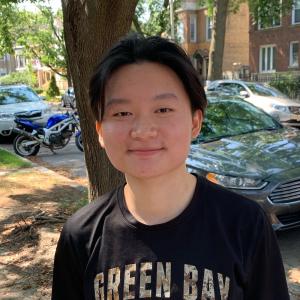Back at the beginning of the semester, I mentioned how excited I was to be taking Bioanalytical Chemistry. I find that I do this frequently: I mention things that I'm excited about and then never follow through to tell you how things actually turned out. So I'll tell you now.
Bioanalytical is a chemistry seminar, meaning that we read and discuss journal articles; there's no lab associated with the class. At the beginning of the semester, I hoped to get better at reading journal articles. All the technical details can get pretty intimidating and the language is very dense, but I think I've gotten better at understanding what the authors are talking about, especially if the article happens to be about Raman spectroscopy and mummies.
Mummies? you ask. Mummies, I say, because the research project that I've been working on over the course of the semester is about mummies. This project involves a long paper that we've been working on throughout the semester as well as a fifteen minute presentation on an aspect of the topic. Basically, this means that I spent a large portion of my semester reading journal articles about mummies.
Everyone in class got to pick their topic themselves. One person is doing a project on counterfeit anti-malaria drugs. Some other people are doing projects on neuroscience topics. There's a wide range of things, which means that each person's presentation is interesting to listen to.
My project is about one method of chemically analyzing mummies. I picked it in part because I'm interested in the intersection between chemistry and archaeology and in part because mummies are very cool. In the beginning, I just knew that I wanted to do research on mummies. As I started looking through the literature, though, it quickly became clear that there is a large amount of Raman spectroscopy done on mummies. Or, at least, there is a large amount of papers being published on Raman and mummies.
Through Oberlin College's library system, students have access to a large number of databases of journal articles. In particular, I've become quite fond of ISI Web of Knowledge because it provides a great indexing of the papers on any given paper references. In this way, you can easily bounce from one paper to the next, and their subjects will be related. This is how I found all of the journal articles that I'm using in my project.
The really nice thing about a semester-long project is that it provides you with the time necessary to really get familiar with a subject. At this point, I know exactly what a paper on the Raman spectroscopy of mummies is going to look like. I've gotten accustomed to the spectral bands that are commonly studied in mummified tissue. I've also gotten to know all the big names in the field, though only on a last name, first initial basis.
The really rewarding thing, though, is that I've amassed a lot of knowledge on the subject. I didn't realize this until I was giving my presentation a couple of weeks ago. I don't like public speaking, so I was very nervous. I talked too fast, but apart from that, I think I did a good job. The thing I was most worried about, though, was the question and answer session. I prepared for the talk, but what if someone asked me something ridiculous that I just couldn't answer? Amazingly, I was able to answer all the questions. I remembered things in journal articles and mentioned them in a (hopefully) coherent manner. I demonstrated for myself that not only can I read journal articles, but I can gain a good deal of knowledge from them, and then pass that knowledge on to other people.


